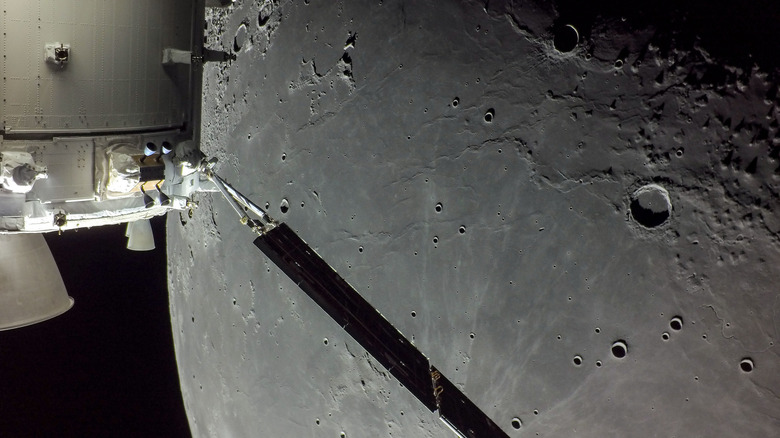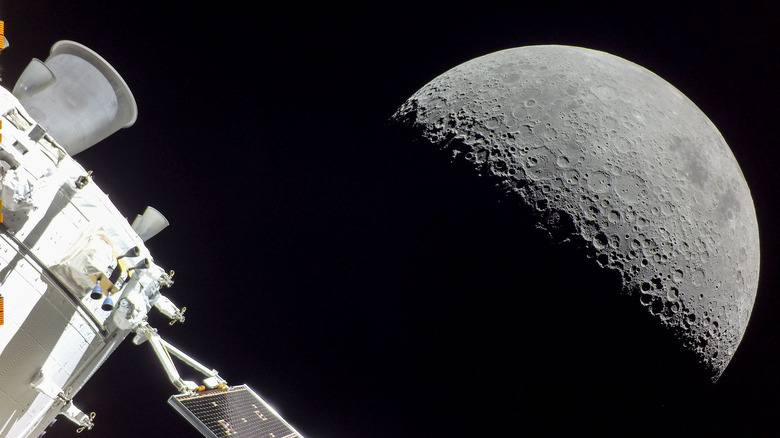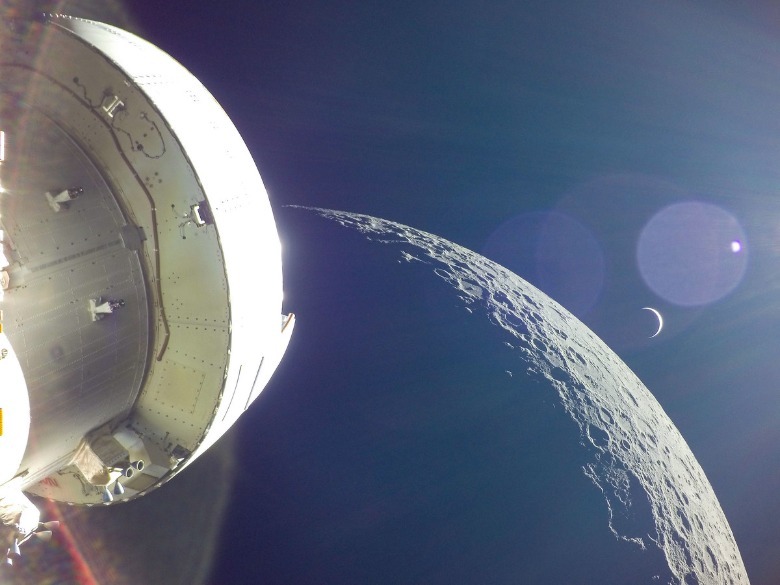Artemis 1 Orion's Close Ups Of The Moon Are A Sight To Behold
In the early hours of December 6, the Orion spacecraft left the gravitational influence sphere of the Moon after completing one last flyby, and it is now headed back to Earth with a splashdown event scheduled for December 11. As the burn-powered return flyby was being handled, Orion's cameras clicked some stunning photos of the Moon. Among them is a close-up shot of the far side of the Moon, which was clicked on December 5 as Orion was approaching the satellite for its return flyby maneuver. In this photo, we can see a portion of the far side can be seen with a mostly smooth surface and dark spots that astronomy enthusiasts refer to as "maria."
The far side of the moon was first photographed by the Soviet Luna 3 spacecraft in 1959, but what has puzzled scientists so far is why the crust on this region is thicker. One popular theory says that when the ancient lunar crust was floating over an ocean of magma, tidal movements separated it from the mantle. Based on computer modeling, it is possible that over millions of years, the crust got thicker by a few kilometers due to tidal heating effects. However, Tidal dissipation is being proposed as another strong candidate for the unique topography of the far side of the moon. Interestingly, China landed a rover on the far side in 2019, and a year later, it had covered over half a kilometer distance for exploration duties.
Viewing moon from the Artemis' lens
In another set of images, we see Orion's solar array and the moon in the background, recreating a moonrise against the backdrop of an empty space. The moon's crater-laden surface is on full display here. Unlike Earth, these unique surface features are not a result of erosion, because the Moon lacks an atmosphere. Research suggests that these craters were formed when floating rocks and comets smashed against the moon's surface and left permanent scars. Samples of lunar regolith suggest that some of these impact events created enough heat to form glass beads out of the surrounding material. As for the radial lines around some of these impact sites, they are called "ejecta rays" and were formed when objects were blasted in all directions after an impact event.
The most stunning image from Orion's album is that of a crescent, which is actually Earth illuminated on just one side, making it look like the Moon as we see it in the sky every month. The moon's signature craters are again visible in all their glory, alongside a portion of the Orion itself. The next major challenge for the Orion will be its re-entry into the Earth's atmosphere when it will be moving "hotter and faster than ever before," according to NASA administrator Bill Nelson. It will be the final test at assessing the suitability of the Orion vehicle for ferrying a crew to the Moon as part of the Artemis II mission.


